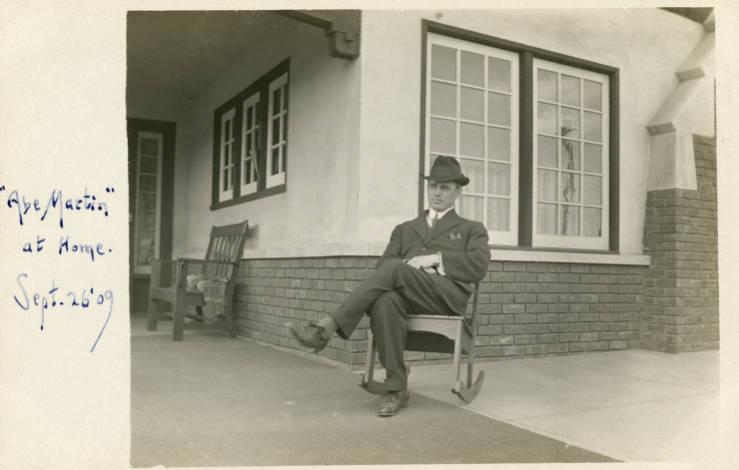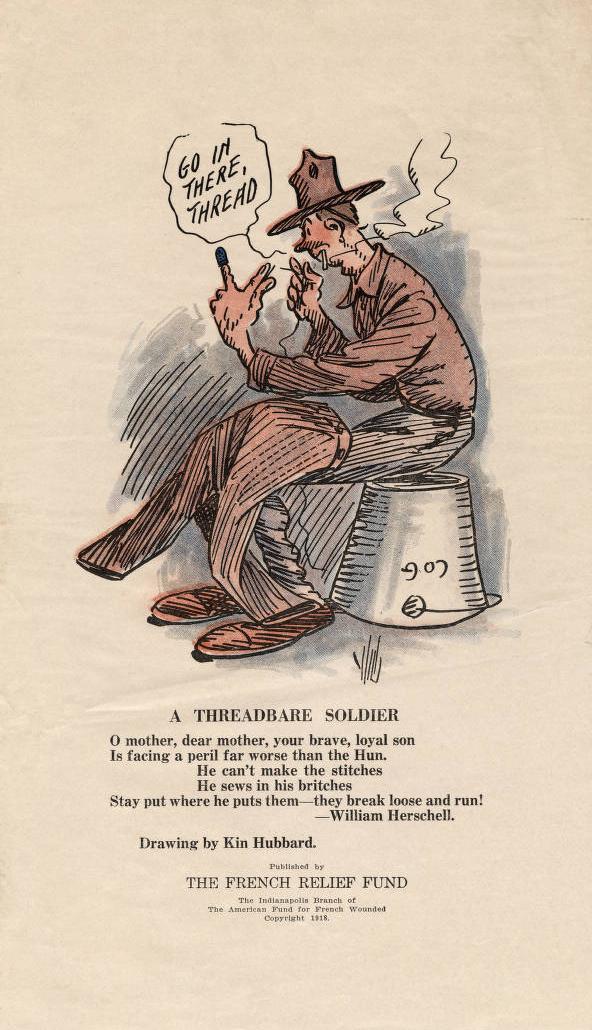
Photo info ...
Credit: Public domain via Wikimedia CommonsView Source
(Sept. 1, 1868-Dec. 26, 1930). Frank McKinney (Kin) Hubbard’s cartoon creation, Abe Martin, graced the back page of the for 26 years. The fictional cracker-barrel philosopher with folksy sayings was syndicated nationally, appearing in approximately 300 newspapers.

Born in Bellefontaine, Ohio, Hubbard was the youngest of six children born to Thomas and Sarah Jane (Miller) Hubbard. Hubbard’s father was editor and publisher of the , while his mother’s father, Capt. John B. Miller, managed a theatrical group. Both men had a strong influence on Hubbard’s career.
Hubbard quit school before finishing the seventh grade, going to work in a paint shop. With the election of Grover Cleveland in 1884, Hubbard’s father—a staunch Democratic supporter— became Bellefontaine’s postmaster. The young Hubbard worked on and off for five years as a clerk in the post office, but he also found time to tour the South as a silhouette artist. Encouraged by his mother, Hubbard entered the Jefferson School of Art in Detroit but dropped out after only a short time.

In 1891, he sent an Indianapolis friend some thumbnail sketches of a minstrel show he had organized in Bellefontaine. The sketches caught the eye of , founder of the , who hired Hubbard as an artist for his newspaper at $12 per week.
Fired by a new managing editor after three years at the , Hubbard had stints as an artist for the , , and . Rehired by the in 1901, he returned to Indianapolis and married Josephine Jackson four years later.
In his early days on the , Hubbard was chiefly a political caricaturist, furnishing the newspaper with drawings of Indiana legislators, lobbyists, and staff members. While covering the 1904 presidential election, Hubbard began to draw the country character that he would make famous. “Abe Martin”—a smiling fellow with whiskers, big shoes, a black coat, and a hat—first appeared in the newspaper on December 17, 1904. By February 1905, Hubbard had moved Abe Martin to the fictitious town of Bloom Center in the rugged hill country of Brown County.
Abe Martin was soon delighting the public with such sage wisdom as “It’s no disgrace t’ be poor, but it might as well be” and “When a fellow says it hain’t the money but the principle o’ the thing, it’s th’ money.” Through the years, Hubbard populated Bloom Center with other country characters, including spinster Miss Fawn Lippincut; senior citizen Uncle Niles Turner; teacher Professor Alexander Tansey; and editor and publisher of the , Hon. Ex-Editor Cale Fluhart.

In 1910, following an article, by Hoosier humorist George Ade praising the Abe Martin feature, Hubbard received numerous offers to syndicate his character. He eventually signed with the George Matthews Adams Syndicate. A year later, Hubbard began a regular Saturday column in the called “Short Furrows.” The feature, which was also syndicated nationally featured comical stories from Abe Martin and other Bloom Center townspeople.
Abe Martin’s sayings were first put in book form in 1906 when Hubbard started a yearly tradition by issuing a collection culled from the in time for the Christmas season. Hubbard’s creations live today in Brown County State Park, where the park’s lodge is named for Abe Martin and each guest cabin features the name of a character from Bloom Center.

Help improve this entry
Contribute information, offer corrections, suggest images.
You can also recommend new entries related to this topic.